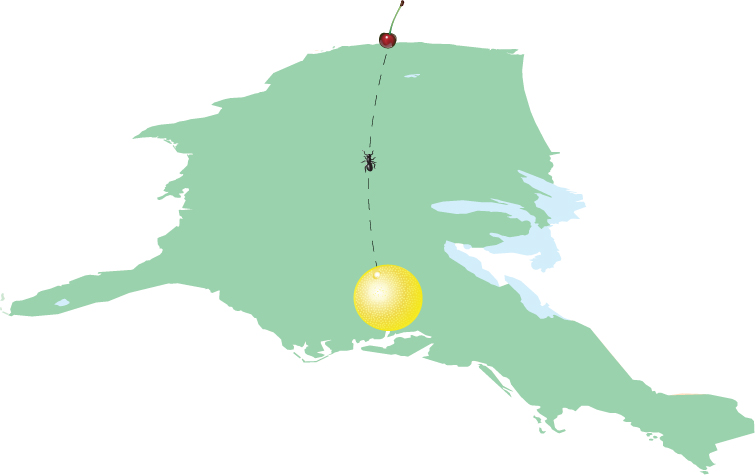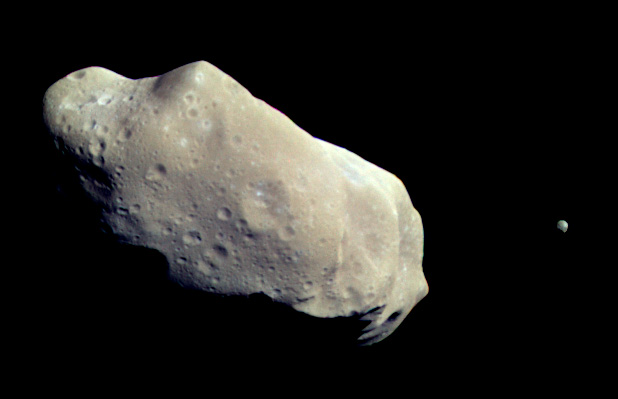A Conceptual Model fosters conceptual understanding by converting hard to fathom information into something more familiar through, e.g., the use of familiar quantities, familiar rulers, and familiar intervals of time.
 Some examples used on the Voyage exhibition storyboards:
Some examples used on the Voyage exhibition storyboards:
i. The distance to the nearest star Proxima Centauri is 40,200,000,000,000 km (24,900,000,000,000 miles). This might be something to memorize, but 24.9 trillion miles is just a huge number, providing no understanding of the distance involved.
Physical Model Equivalent: On the scale of the Voyage exhibition, the Sun is the size of a large grapefruit in Washington, DC, Earth is smaller than the head of a pin 50 feet (15 m) west of the Sun, and the nearest star to the Sun, Proxima Centauri, is the size of a cherry on the California coast.
Deeper Conceptual Model: Light is the fastest thing in the universe, able to travel around the Earth 7.5 times in 1 second. The fantastic speed of light on the scale of Voyage is just 1-inch (2.5 cm) per second, the speed of a fast ant. Therefore, exploring just the space between the Sun and the nearest star to the Sun—at the fantastic speed of light—is equivalent to exploring the continental United States as an ant.
ii. ‘The Sun is located 150,000,000 km (93,000,000 miles) from Earth’ is a statement that provides no conceptual understanding. In fact, if taught in a classroom, one could argue that no learning is taking place.
Yet if you could travel from Earth to the Sun at the speed of a commercial jet—at 600 mph (1,000 km per hr)—it would take 17 years. To a 10 year old that’s a learning experience. They would be 44 years old by the time they got back from their field trip to the Sun. They would be an ‘old person’. In fact they might even think that the Sun is far.
Each Voyage planetary stanchion contains the distance between planet and Sun in kilometers in deference to our formal scientific understanding. But in terms of conceptual understanding for the visitor, each stanchion also includes how long it would take to reach the Sun at the speed of a commercial jet, e.g., “At the speed of a passenger airplane (600 mph; 1,000 km/hr), it would take 328 years to travel from Uranus to the Sun.”
iii. The number of stars in the Milky Way galaxy is estimated to be around 350,000,000,000. That’s enough stars to give 50 to every human being on Earth. Enough to give 50 to everyone in your school, your town, your state, your nation, and on your planet.
iv. From the Voyage storyboard for asteroids and comets—
“Welcome to Ida, a medium-sized asteroid about 40 miles (60 km) across. Gravity is so weak on Ida that you could easily jump as high as the Washington Monument. And the landing would be as gentle as the launch.”

